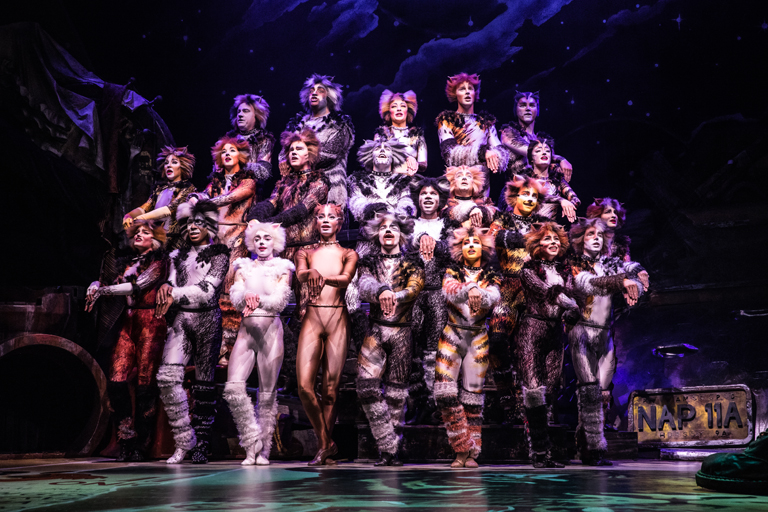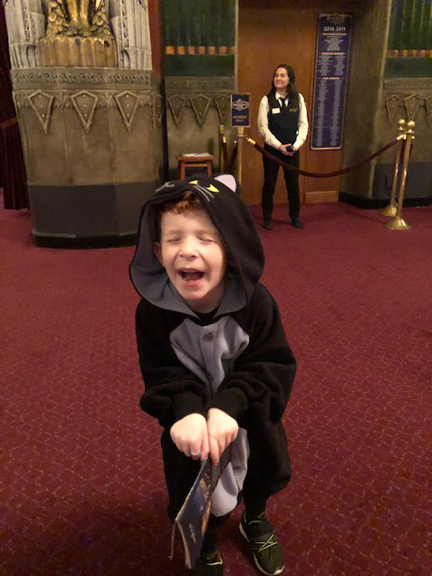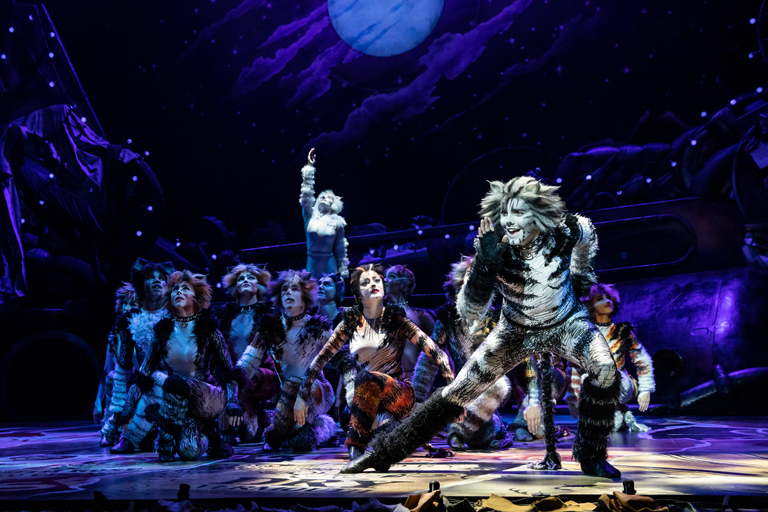
The North American Tour Company of ‘Cats.’
By Mary O’KEEFE
Before, there were cute videos of cats playing the piano. Even before we all heard the first rendition of “Smelly Cat” on “Friends,” there was T.S. Elliot, the ultimate lover of all things cats.
T.S. Elliot’s “Old Possum’s Book of Practical Cats” was first published in 1939. It is a series of poems about his Jellicle cats. Those poems inspired Andrew Lloyd Webber to write and compose the Broadway play “Cats,” which is now playing at the Hollywood Pantages through March 24.
The world premiere of “Cats” was in 1981 and since then it has garnered an impressive collection of awards including a Tony for best musical. In 1997, it became the longest running musical in Broadway history. Then in 2002 “Cats” played its final performance in London. But it wasn’t gone for long; in 2003, it opened in China and in 2014 the “Cats” revival began in earnest and today continues to entertain audiences around the world. It remains one of the most imaginative and poignant musicals of all time.
I first saw “Cats” in the 1980s when it came to the Shubert Theatre, which has sadly since been torn down. I was working in theater at the time and remember being fascinated by the make-up and hydraulic set piece that lifted Old Deuteronomy and Grizabella. It was a magnificent dance of lighting and technology, and the make-up told a story all on its own. I did walk out of the play with “Memory” playing in my head but was so overwhelmed by the technical aspect I think I missed much else of the musical performances.
When we were invited to attend the musical again at the Hollywood Pantages, I viewed it through a different lens. During my life I have dealt with many actors and dancers. I have such respect for these crafts. Performances do not just happen; there is a tremendous amount of work done to understand character, dialogue or lyrics and to turn make-believe into reality – at least for while we are in those theater seats.
“Cats” had me mesmerized not only by the cast’s musical and dancing talents but their acting within this imaginary feline world. Their characters had the twitches, head turns and paw-play like … well, real cats. For example, Victoria, portrayed by Caitlin Bond, went beyond being a breathtaking ballerina and could be seen playing with shadows on the floor. Bustopher Jones, portrayed by Timothy Gulan – well, I have known that real cat … it was a girl and her name was Doorstep and she had those same moves.
The choreography was by Andy Blankenbuehler and based on the original choreography by Gillian Lynne. There was never a time when someone was not on stage dancing or moving. The dance numbers were energetic and beautiful in their timing and movement. The songs, regardless whether one is a fan or not, have been heard for decades and their meaning became more profound as the cast brought the lyrics to life.
I went to the performance with my actress/daughter-in-law Sabrina. She had never seen “Cats” and I couldn’t wait to see her reaction to the entire performance but especially to the show-stopping song “Memory” sung by older cat Grizabella, portrayed by Keri Reñe Fuller. She and I both held our breaths as this song floated through the theater. It didn’t matter whether this was the first time you heard it or had heard it many times; this was the moment in the theater that the audience yearned for.
There were so many aspects of this performance that could be highlighted, including the lighting design by Natasha Katz and scenic and costume design by John Napier.

Cat lover Charlie Cunningham, 6, came to see his first performance of “Cats.” He loves to sing, according to his mom, so this seemed like a perfect musical for him.
I would recommend those who have never seen “Cats,” and those who haven’t seen it in a while, to take the time and go to the Hollywood Pantages.

As the play ended, I left the performance not only with the song “Memory” playing in my head but satisfied by an all-encompassing theater experience. And perhaps now that I have more in common with Grizabella than I did some three decades ago, I also left with a new understanding of the song’s lyrics “When the dawn comes, tonight will be a memory, too, and a new day will begin.”
